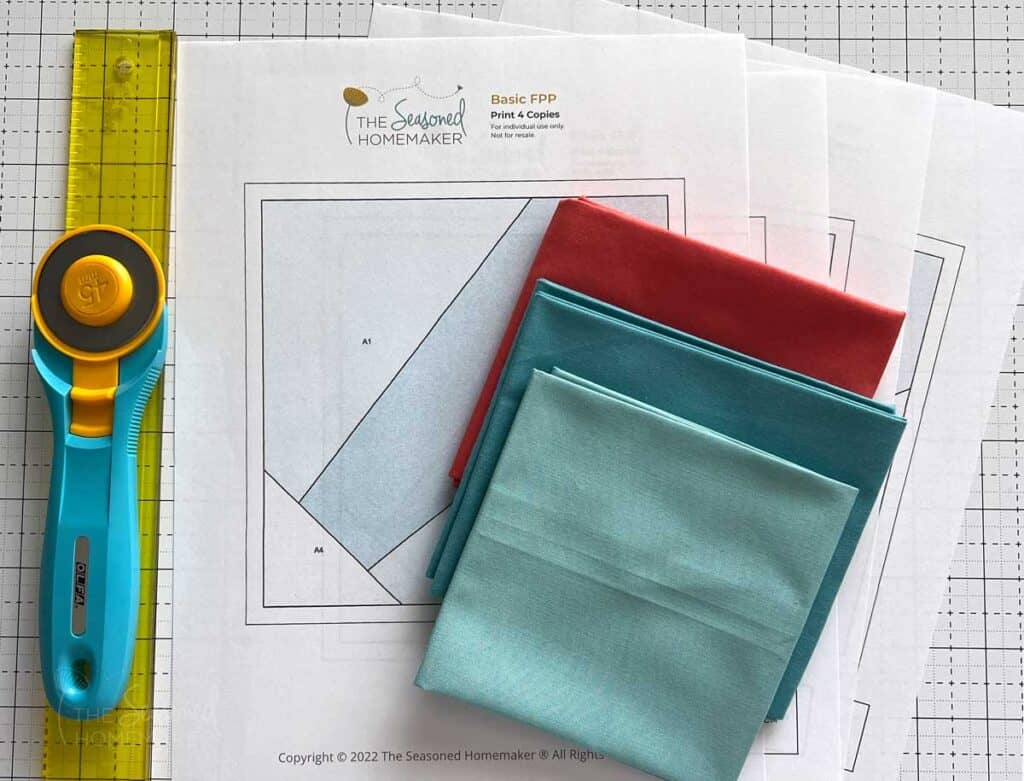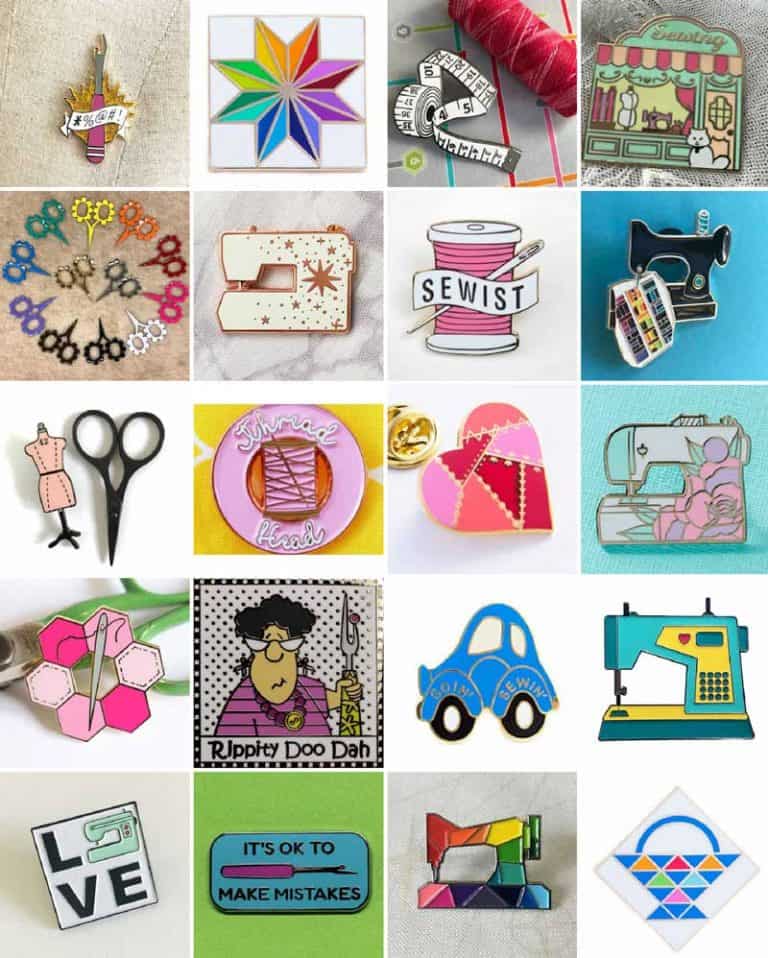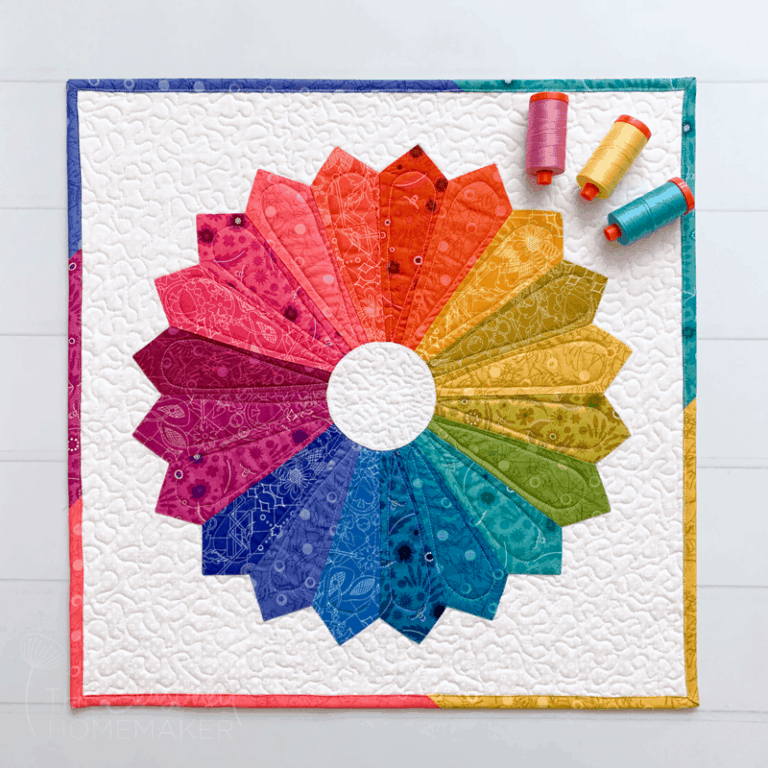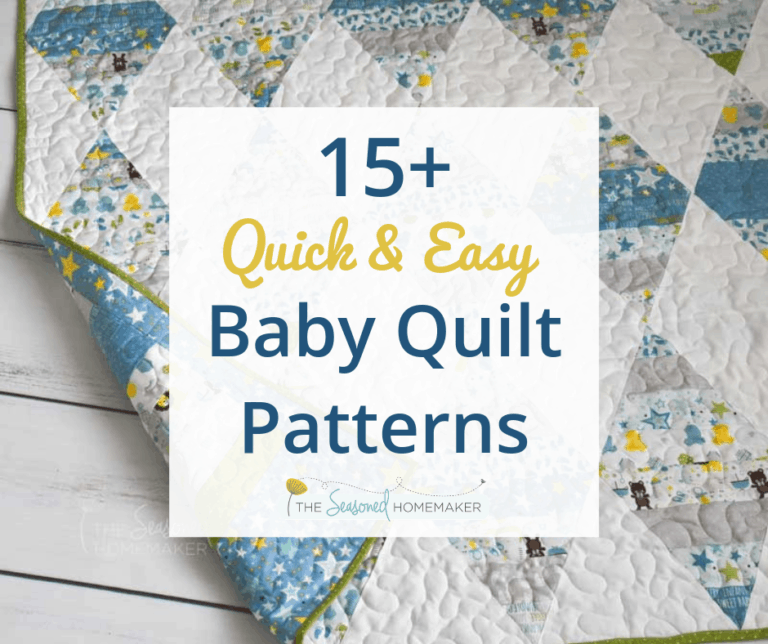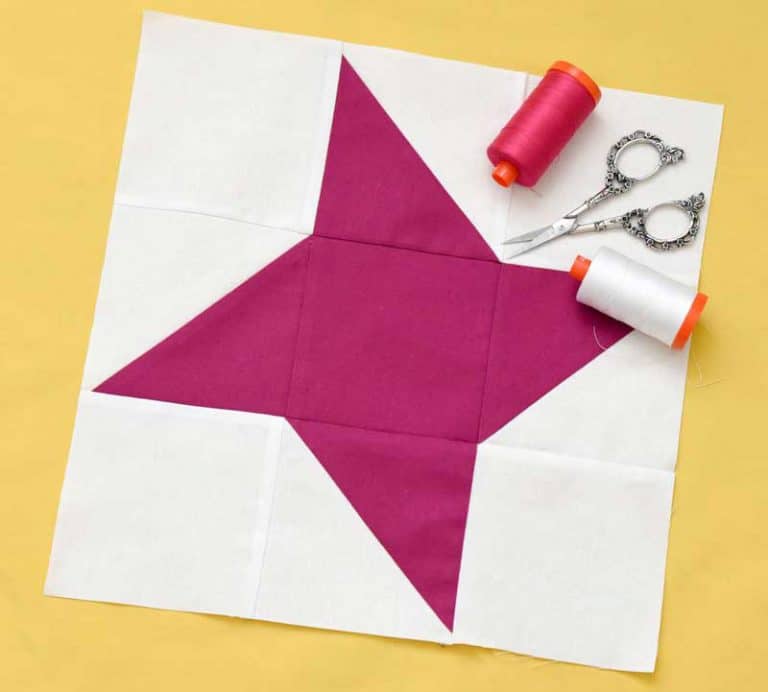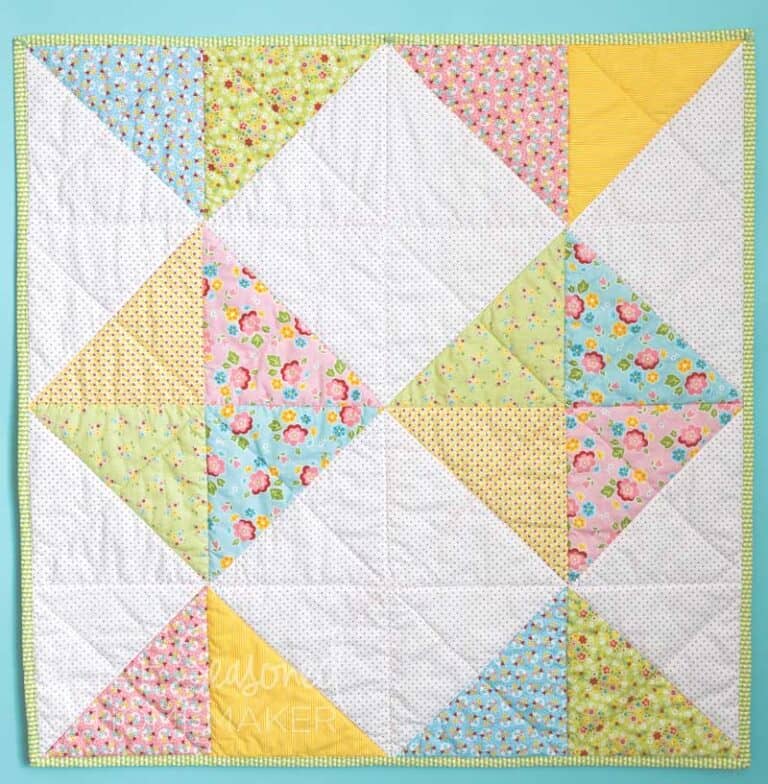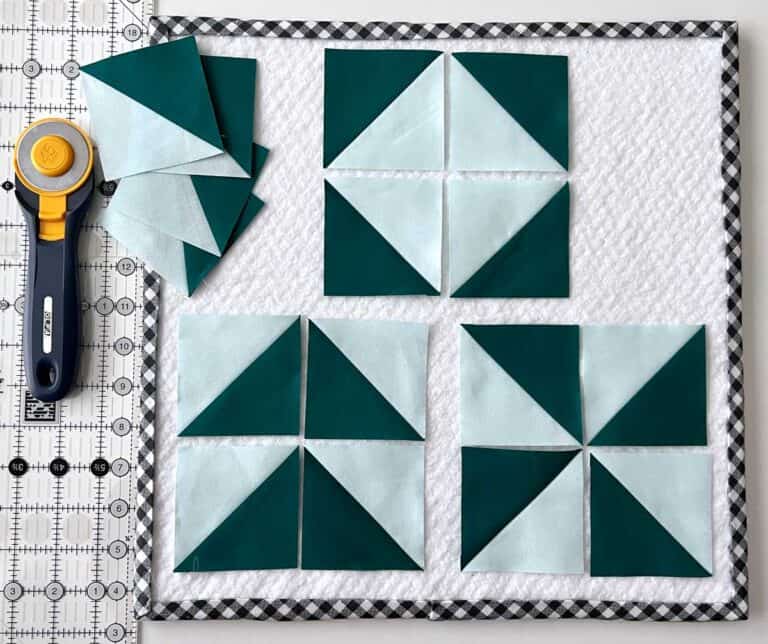Beginner Foundation Paper Piecing
This post may contain affiliate links which won’t change your price but will share a commission.
Inside: Beginner Foundation Paper Piecing
I love foundation paper piecing! It’s the easiest way to get perfect quilt blocks every time. After one or two easy FPP projects, you’ll be ready to tackle almost anything!
Let’s take the mystery out of the foundation paper piecing technique by showing what you need to get started. Soon enough you will be wanting to make everything using this technique!
Note: This looks scary, but I promise it’s easier than it appears. If you can make this block, you’ll graduate to being a Foundation Paper Piecer Extraordinare!
Want an ad-free, printable copy of this tutorial? Scroll to the bottom of this post for more details!
FPP vs. EPP?
Before going any further, I believe people get confused by the difference between Foundation Paper Piecing (FPP) and English Paper Piecing (EPP).
Both use some sort of paper to stabilize the designs but there is one huge difference.
Foundation Paper Piecing is sewn on a machine and English Paper Piecing is done by hand.
FPP allows you to make blocks that appear complicated, but in reality are very simple. You just need to understand a few steps.
Before you start
FPP is a technique that requires a little patience and a bit of a mind shift about how to construct a quilt block. But, I promise, if you’re willing to take the time to learn, you’ll get amazing results every time.
Learning FPP is also a way to unlock your creative side by allowing you to create unique designs for your quilts.
If you’ve never tried foundation paper piecing I have another tutorial that walks you step-by-step through the process. You may want to try it first, before tackling this project.
>>>How to Foundation Paper Piece
Assuming that you’ve taken the time to walk through the tutorial above or have some experience with FPP, I have created a versatile pattern to advance your skills.
With this pattern you will make four identical 6″ blocks and then attach them together to create a unique 12″ block.
Step 1: Supplies to Make the Quilt Block
There are two products that I highly recommend. Foundation Paper and the Add-A-Quarter Ruler (see links below). Both of these items are fairly inexpensive, will make the learning process much easier, and make you feel like a pro!
Materials List:
This pattern requires you download a pattern that I’ve created.
- Foundation Paper Pieced Pattern
- Fat Quarters in three different colors
- Foundation Paper
- Computer Paper: Inexpensive and easily available.
- June Tailor’s Foundation Paper: My absolute favorite.
- Carol Doak’s Foundation Paper: Paper is specifically designed for FPP.
- Add-A-Quarter Ruler
- Rotary Cutting Mat
- Rotary Cutter with sharp blade
- Schmetz Universal Needle
- Aurifil 50 wt Thread
- Pins
- Seam Roller
- Daylight Light Box (optional)
- This is a great tool to have if you plan to do a lot of FPP blocks. It’s 9 x 12 inches which is the perfect size for most quilt blocks.
- Daylight Cutting Mat (optional)
- The perfect add-on for the Daylight Light Box. It’s a clear rotary cutting mat with grid lines and it sits directly on top of the light box, making it easy to trim seam allowances directly on the light box.
Step 2: Preparations for FPP
Note: If this is your first time doing an FPP project, you may want to label each number with the color of fabric you plan to place there.
- Lower your stitch length to 1.5mm. If using computer paper, you may need to lower it to 1mm.
- Use a dedicated sewing machine needle for sewing on paper. Once you’ve finished this project, label it and save it for your next FPP project.
- Print the FPP template and trim away the excess paper. This gives you a 1/4″ seam allowance on your finished block.
Pro Tip: For trimming, be sure to use scissors or a rotary cutter dedicated to trimming paper. Several companies make inexpensive rotary cutters in different colors and this is a great way to have one dedicated for paper use only.
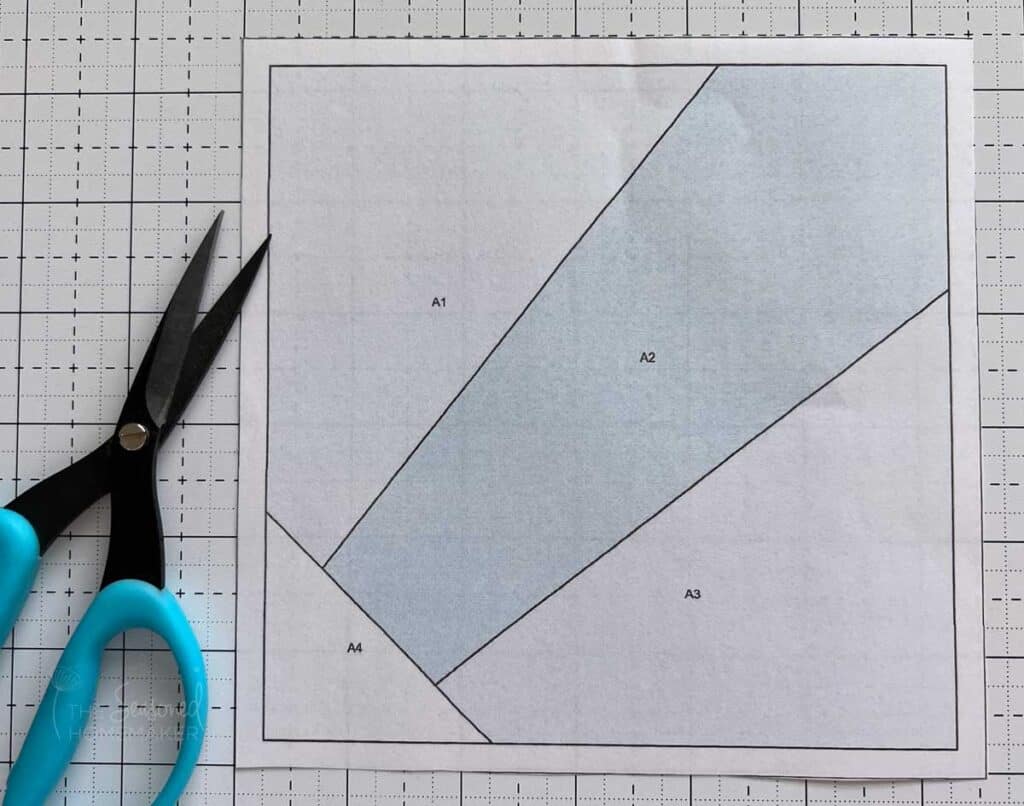
Step 3: Fabric Alignment
- Notice that each section of the pattern is labeled with numbers. These numbers indicate the order that the fabric is going to be sewn down.
- Beginning with section A1, line up a piece of fabric slightly larger than this area. Place the wrong side of the fabric facing the back of the printed template and pin in place.
- Hold up to a light source such as a lightbox or window to make sure that the fabric covers area A1 and has a minimum 1/4″ seam allowance.
Pro Tip: Having a larger seam allowance is fine since this will all be trimmed away. Better to be safe than sorry.
Step 4: Adding the Next Piece of Fabric
- On the front of the FPP paper, find the line between Section A1 and A2 and fold paper back along this line. This will help you better align fabric A2.
- Find the section labeled A2 and place a piece of fabric right sides together with fabric A1. Be sure the fabric extends at least 1/4″ beyond the fold on the paper because this will become your seam allowance. Make sure the side margins are at least 1/4″ because these will become the seam allowances when adding other fabrics to the template.
- Pin the fabric in place and unfold the paper pattern.
- Be sure to set your stitch length to 1.5mm for FPP paper or 1.2 – 1.0mm for printer paper.
- Time to stitch! On the front of the paper pattern, stitch along the solid line between Section A1 and Section A2. It’s fine to start and end in the margin. If your machine has a stitch locking function, this is a great place to use it.

Step 5: Trimming the Seam
This is the best part because you will now be able to see how efficient FPP really is!
- On the seam line you just stitched, fold back the paper pattern just like you did when aligning the fabric.
- Place the lip of the Add-a-Quarter Ruler close against the seam. Be sure there are no puckers or uneven stitches. Trim down the seam allowance to 1/4″.
- Unfold the paper pattern and prepare to press the seam.
Pro Tip: Always double check your seam allowance before you trim and be careful not to cut away any of the paper pattern.

Step 6: Pressing the Seams
A lot of people prefer to use a Seam Roller to press their Foundation Paper Piecing seams between stitching because it’s easy to keep next to the sewing machine. Others will set up a mini iron next to their machine to press the seams.
If you prefer this, be sure to use a dry iron or you may get the paper template wet. Personally, I walk across the room to press my seams because it makes me get up and move.
- Place the printed paper template facing down and the fabric side facing up.
- Using one of the ironing methods mentioned above, press the seam toward the most recently added piece of fabric.

Step 7: Repeat
Repeat Steps #4 – #6 using the same process for the sections labeled A3 through A4.
Once you have finished sewing all of the pieces to the paper piecing foundation template you are ready to trim the block and remove the paper.
In order to create the design, make three more blocks.
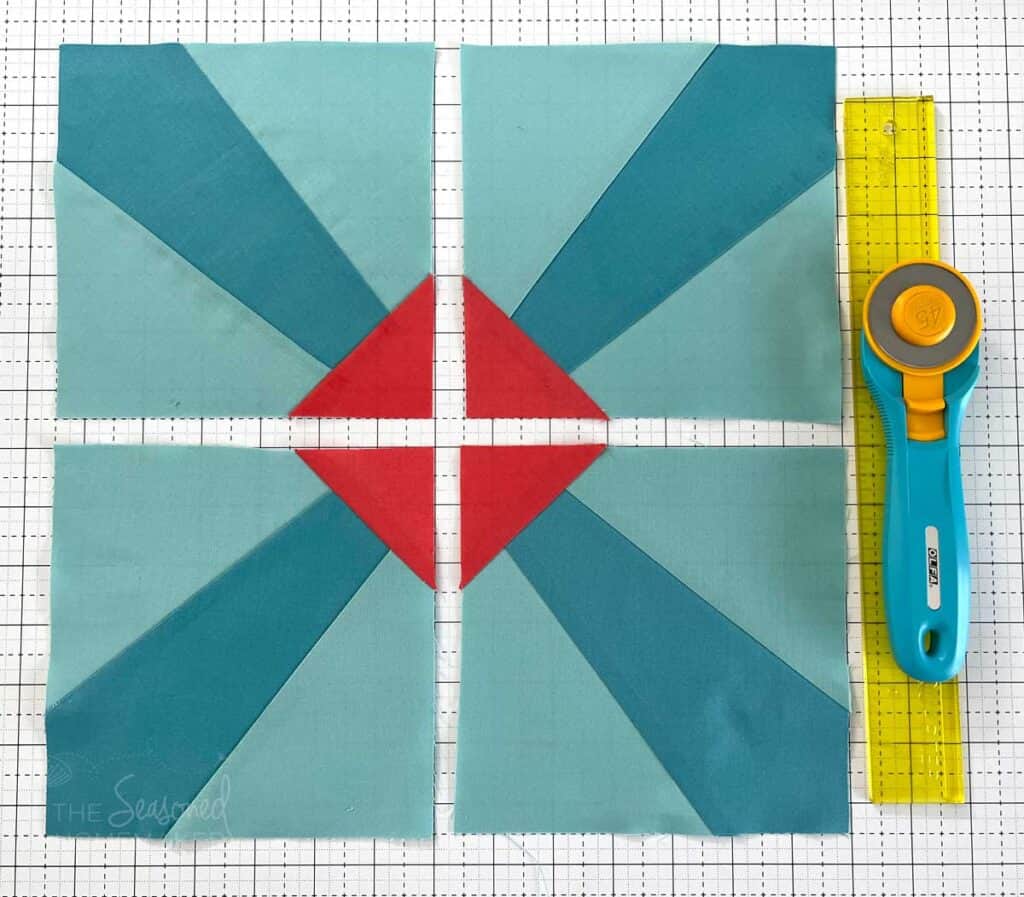
Putting it all Together
Once you have all four sections of the individual quilt pattern finished, join the four sections to complete your mini-quilt top.
Be very intentional about the fabric placement in order to create a nice contrast between any print and solid fabric pieces.
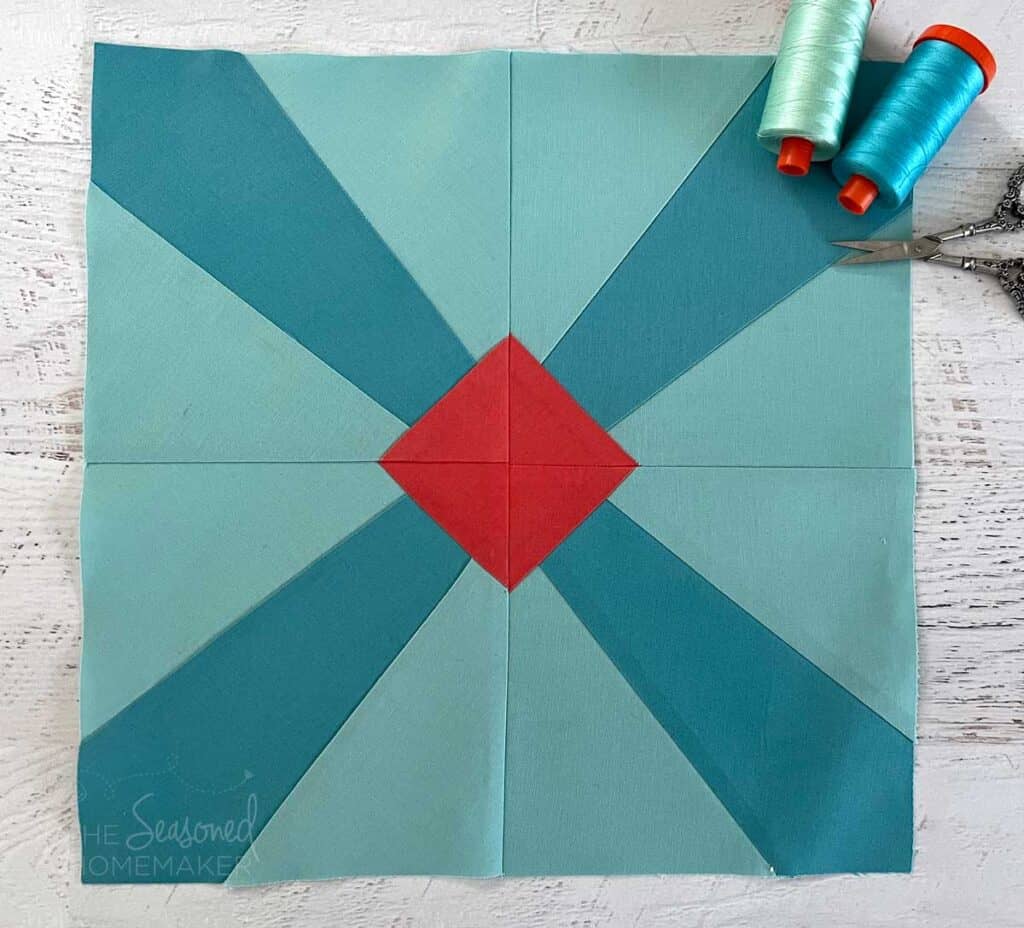
Simplifying the Process
Did you know that this pattern went together quickly? Part of the reason is due to using Carol Doak’s foundation paper for the pattern. It makes ripping out the paper SOOOOOOO much easier!
The second thing that made this go together fast is the Add-A-Quarter ruler which makes the trimming so much faster. It has a lip on it that nests nicely on the seam of your project so you can achieve the perfect quarter inch trim each time.
I also like using a seam roller instead of a hot iron to press down the seams. Once the block is complete, then you can press all of the seams flat.
>>> Want an ad-free, printable version of this post? Click the pink button below and download the Printable PDF instructions.

Ready for more FPP?
I hope you’ve found some inspiration with this fun and easy quilt block. Did you know you can make little 6″ coasters, a table runner, and even a quilt using this pattern!
If you’re ready to stretch your foundation paper piecing wings I have a few FPP projects that are super easy. Click the links below to learn more.
I can’t wait to see what you’ve made!
Happy Quilting!



